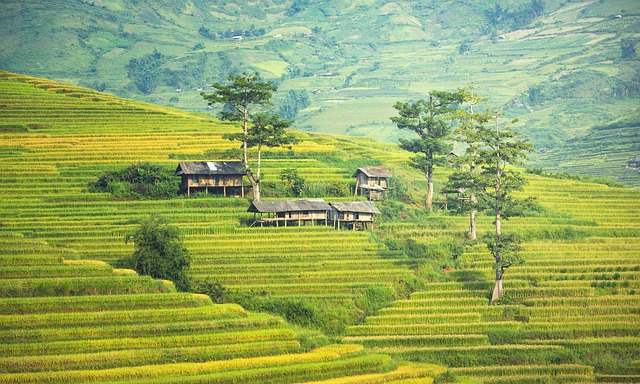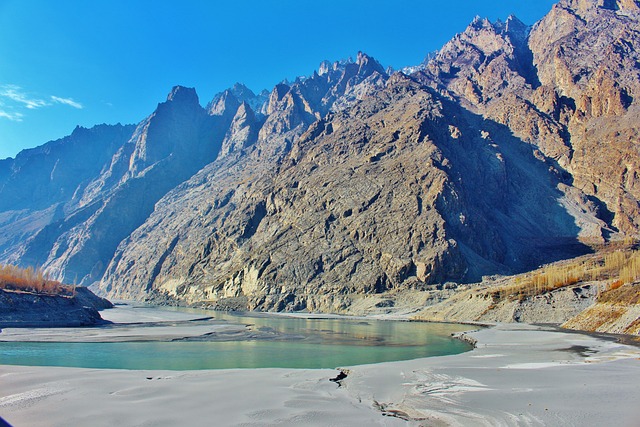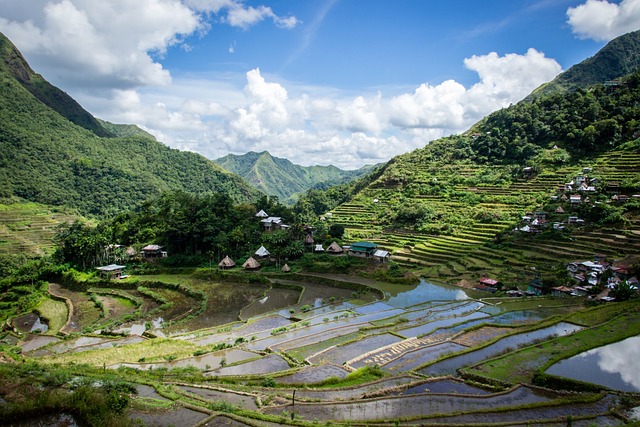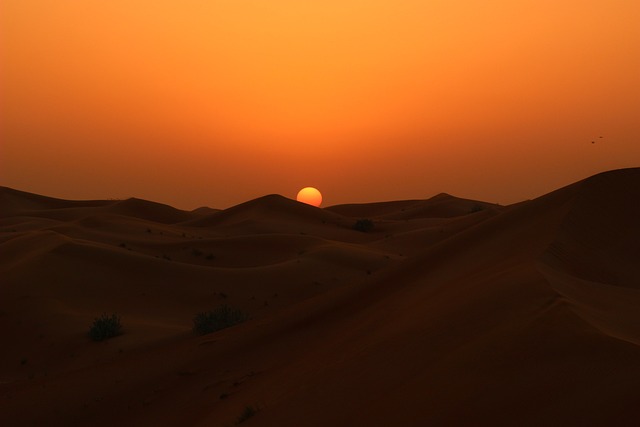Asian travel destinations – Let’s explore here
Take a look at the Asian travel destinations below to see if there is anywhere you’d like to explore. Click on the map or the countries below to find further information and tips for overland travel, as well as some anecdotes that may help you on your travels.
What’s it like in Asia?
Asia covers almost 30% of the land area on the planet, and has about 60% of the world’s population – more people than all other continents combined. There are over 50 countries in Asia and Russia is the largest country by area, whereas the Maldives is the smallest.
Remember, when you’re planning your next trip to take a look at what time zone it’s in.
We’re constantly updating information on countries that we visit, so keep referring back to the info as it evolves.
A bit about the history of Asia
Ancient Civilisations
Asia is home to some of the world’s earliest and most influential civilisations. In Mesopotamia, located in modern day Iraq, the Sumerians developed one of the first writing systems and established early cities around 3000 BC. To the east, ancient China saw the rise of the Shang and Zhou dynasties, which laid the foundation for Chinese culture, philosophy, and government. The Indian subcontinent was home to the Indus Valley Civilisation, known for its advanced urban planning, and later the Vedic period, which shaped Hinduism and Indian society.
Classical Civilisations and Empires
By the 6th century BC, powerful empires began to emerge in Asia. The Persian Empire, under Cyrus the Great, spanned from Egypt to India, while in India, the Maurya Empire was established, with Emperor Ashoka promoting Buddhism across the region. In China, the Qin Dynasty (221–206 BC) unified the country and initiated major infrastructural projects, including the Great Wall. In the Indian subcontinent, the Gupta Empire (circa 320–550 AD) oversaw a period of great intellectual and cultural achievements, known as the Golden Age of India.
The Rise of Islam and the Mongol Empire
In the 7th century, Islam spread rapidly across Asia, particularly in the Middle East and central Asia, shaping the culture and politics of regions such as the Arabian Peninsula, Persia, and the Indian subcontinent. By the 13th century, the Mongol Empire, led by Genghis Khan, expanded across Asia from China to Europe, unifying a vast area under a single empire, although it eventually fragmented into various Khanates.
The Islamic Empires and Indian Kingdoms
From the 15th century onwards, several powerful Islamic empires rose in Asia, including the Ottoman Empire, the Safavid Empire in Persia, and the Mughal Empire in India. The Mughal Empire, particularly under Akbar the Great (reigned 1556–1605), oversaw a period of religious tolerance, economic growth and cultural flourishing. In east Asia, China saw the rise of the Ming Dynasty (1368–1644), which expanded its territory and oversaw a cultural renaissance, while Japan entered a long period of feudal rule under the shogunate system.
European Colonisation and Influence
From the 16th century onwards, European powers began to establish trading posts and colonies in Asia. The Portuguese, Dutch, French and British were among the primary colonisers. The British established control over large parts of India, while the Dutch dominated parts of south east Asia. The French and the British also engaged in territorial rivalry in Indochina. The presence of European powers led to significant political and economic changes across Asia, including the introduction of western ideas, technologies and Christianity.
The Fall of Empires and the Rise of Modern Nations
In the 19th and early 20th centuries, many Asian empires began to decline. The Qing Dynasty in China was weakened by internal rebellions and external pressures, leading to its collapse in 1912. In India, British colonial rule faced increasing resistance, culminating in independence in 1947. In Japan, the Meiji Restoration (1868) ended centuries of feudal rule and modernised the country, making it a major imperial power. The decline of the Ottoman Empire also led to the creation of modern Turkey after World War I.
World War II and its Aftermath
Asia was deeply impacted by World War II. The Japanese Empire expanded throughout east Asia and the Pacific, but after its defeat in 1945, many Asian countries gained independence. In China, the long standing civil war between the Nationalists and Communists led to the victory of Mao Zedong’s Communist forces in 1949, creating the People’s Republic of China. In south east Asia, former colonies such as Indonesia, Vietnam and the Philippines gained independence in the post war period.
Cold War and Regional Conflicts
The Cold War (1947–1991) greatly influenced Asian geopolitics. The Korean War (1950–1953) resulted in the division of Korea into North and South Korea, while the Vietnam War (1955–1975) saw North Vietnam, supported by the USSR and China, fight against the US-backed South Vietnam. In the Middle East, the Arab-Israeli conflict and the Iranian Revolution of 1979 led to significant political shifts.
Economic Growth and Global Influence
From the late 20th century onwards, several Asian countries experienced rapid economic growth. Japan became an economic powerhouse, while the Four Asian Tigers; Hong Kong, Singapore, South Korea and Taiwan; saw significant industrialisation and modernisation. China’s economic reform policies, introduced in the late 1970s under Deng Xiaoping, transformed it into a global economic leader. India also emerged as a major economic force with its IT and service sectors.
Modern Asia
In the 21st century, Asia remains a continent of diverse political systems, cultures, and economies. China and InIndiadia are among the world’s largest economies, while south east Asia is increasingly integrated into the global economy. The Middle East continues to face political instability, and regional tensions remain, particularly between India and Pakistan, and in the Korean Peninsula. Asia’s rise as a global economic and political centre has reshaped the world order, with the continent playing a crucial role in international trade, security, and diplomacy.
Either click on the map of Asian travel destinations …
Or choose an Asian travel destination below …
Afghanistan

In former times Afghanistan was a major trading and stopping point for those on the Silk Road.
Click the image for more info …
Armenia

Armenia is a stunningly beautiful, mainly mountainous country that sits in the Caucasus.
Click the image for more info …
Azerbaijan

Azerbaijan is a interesting, mostly mountainous country that sits within the Caucasus.
Click the image for more info …
Bahrain

Bahrain is a set of about 50 islands, plus over thirty artificial islands. It’s very hot, very flat, and mostly composed of desert.
Click the image for more info …
Bangladesh

Most of Bangladesh is less than 40 ft (12 m) above sea level, leaving it vulnerable to mass flooding.
Click the image for more info …
Bhutan

The steep mountains of the north of Bhutan give way to lower forested mountains in the centre before becoming plains at the border.
Click the image for more info …
Brunei

Brunei is split into two parts, both on the coast. The eastern part is mountainous and only a small percentage of the population Iive there.
Click the image for more info …
Cambodia

In the centre of Cambodia lies a large lake called the Tonle Sap, which can which can cause floods up to 9,500 square miles (24,605 square km) in the rainy season.
Click the image for more info …
China

China has deserts in the north and tropical rainforests in the south, as well as a number of the world’s highest mountain ranges. The highest point is Mount Everest.
Click the image for more info …
Cyprus

Cyprus is a spectacular island, particularly along the coasts, and in the mountains and forests. This is a view in Nicosia, the capital.
Click the image for more info …
Georgia

Georgia is a stunning, mainly mountainous country that is part of the Caucasus. There are several disputed regions in the north.
Click the image for more info …
India

For the most part driving in India is frenetic, life threatening, haphazard, with virtually no attempt to follow any rules at all 🙂
Click the image for more info …
Indonesia

Indonesia actually consists of over 17,000 islands, and half the population (more than 150 million people) live on one island, Java – the most populated island on earth.
Click the image for more info …
Iran

Iran is is one of the world’s most mountainous places. In the north lie lush forests, whereas in the east there are deserts and salt lakes.
Click the image for more info …
Iraq

Iraq is home to some of the earliest civilisations, empires and cities in the world. Mountains and deserts cover two thirds of the country.
Click the image for more info …
Israel

Israel mostly consists of deserts, mountains and coastal plains. In the east lies the super-salty Dead Sea, the lowest land-based point on earth.
Click the image for more info …
Japan

Most of Japan is covered in mountains, making it one of the most densely populated countries in the world. Tokyo is the most populous city.
Click the image for more info …
Jordan

To the east of Jordan lies desert, whilst in the west, rain is plentiful and the land is very fertile. Several empires span a long & rich history.
Click the image for more info …
Kazakhstan

Kazakhstan is massive – don’t underestimate the time it takes to travel across it, and plan where you might want to stay.
Click the image for more info …
Kuwait

Two thirds of Kuwait’s population are foreign nationals, and due to its oil wealth, its currency is the highest valued in the world.
Click the image for more info …
Kyrgyzstan

The Tian Shan mountains cover over 80% of Kyrgyzstan, and it’s further from the sea than any other country on earth.
Click the image for more info …
Laos

Laos mainly consists of forests and mountains, with a few small plains. It has a young population, with almost one third being under the age of 15 years.
Click the image for more info …
Lebanon

Lebanon has a very long and rich history dating back many thousands of years. It has several sets of mountains surrounding the coastal plain.
Click the image for more info …
Malaysia

Malaysia is a stunningly beautiful country in south east Asia, that’s split across two different land masses separated by the South China Sea.
Click the image for more info …
Maldives

The Maldives is actually composed of a set of 26 atolls containing 1,192 coral islands, making it one of the world’s most dispersed countries.
Click the image for more info …
Mongolia

Half the the population of Mongolia lives in the capital, Ulaanbaatar, making it the least densely populated country in the world. Ulaanbaatar is the coldest capital earth.
Click the image for more info ..
Myanmar

Myanmar is a stunningly beautiful country in south east Asia. The country contains numerous mountains ranges, including part of the Himalayas.
Click the image for more info …
Nepal

Nepal is a stunningly beautiful, landlocked country in central Asia. Located in the Himalayas, it’s slightly larger than England.
Click the image for more info …
North Korea

North Korea is dominated by forested mountains that cover 80% of the land, and the population lives on the remaining plains.
Click the image for more info …
Oman

Oman is dominated by a vast desert plain bordered by mountains. The capital has been an important trading post for millennia.
Click the image for more info …
Pakistan

The Pakistan highlands contain five of the highest mountains in the world, including K2, the second highest mountain on earth.
Click the image for more info …
Palestinian territories

more info here soon…
Philippines

The Philippines is a stunning country that consists of over 7,600 islands in south east Asia; set over 1,100 miles north to south.
Click the image for more info …
Qatar

Qatar is a very wealthy, desert country in western Asia. It’s very hot, very humid and very flat!
Click the image for more info …
Russia

I was fortunate enough to visit Russia when it was still the Union of Soviet Socialist Republics. This is a view of one of the hotels.
Click the image for more info …
Saudi Arabia

Saudi Arabia has more than 2000 dormant volcanoes and numerous lava fields, and no permanent rivers.
Click the image for more info …
Singapore

Singapore actually consists of one main island and over 60 smaller islands, and is one of the most densely populated places on the planet.
Click the image for more info …
South Korea

Most of South Korea is dominated by mountains, and half the population live in the capital city, making it one of the most populous cities on earth.
Click the image for more info …
Sri Lanka

Sri Lanka is mainly a fairly flat country with mountains in the south. Hindu myths state that there was a land border with India until about 1500BC.
Click the image for more info …
Syria

Syria is home to some of the oldest continuously inhabited places in the world, as well as the first farmers.
Click the image for more info …
Taiwan

Two thirds of Taiwan is dominated by mountains, making it one of the most densely populated places on earth.
Click the image for more info …
Tajikistan

The Pamir mountains cover most of Tajikistan, and most of the country is at least 10,000 ft (3,050 m) above sea level.
Click the image for more info …
Thailand

The north of Vietnam is dominated by mountains, with various plains and deltas covering the rest of the country.
Click the image for more info …
Timor-Leste

The name Timor-Leste can literally be translated as ‘East-East’! The interior of the country is full of inactive volcanic mountains.
Click the image for more info …
Turkey

The capital of Turkey, Istanbul, is the only city in the world to sit in two continents – one in five Turkish citizens live there.
Click the image for more info …
Turkmenistan

Turkmenistan is a very hot and dry, landlocked desert country in central Asia. It was a major trading and stopping point on the Silk Road.
Click the image for more info …
United Arab Emirates

Most of the population are expatriates or migrant workers for the oil and gas industries. Only around one in nine of the UAEs population are Emirati citizens!
Click the image for more info …
Uzbekistan

Uzbekistan is a very hot and dry, doubly- landlocked country in central Asia. It is one of only two doubly-landlocked countries in the world.
Click the image for more info …
Vietnam

Vietnam is a mostly hilly and forested country, with a very long coastline – over 2,100 miles (3,400 km) long. Mountains cover two fifths of the country.
Click the image for more info …
Yemen

The coastline of Yemen is over 1,200 miles (1,900 km) long, and there are a number of islands in the Red Sea that have active volcanoes on them.
Click the image for more info …
Thanks to those aspiring photographers at Unsplash and Pixabay for some of these images … you are awesome!
